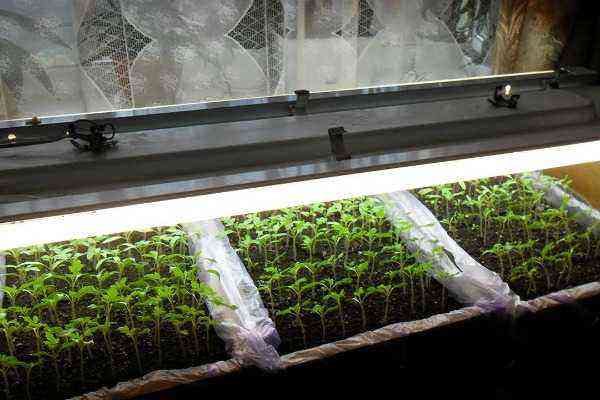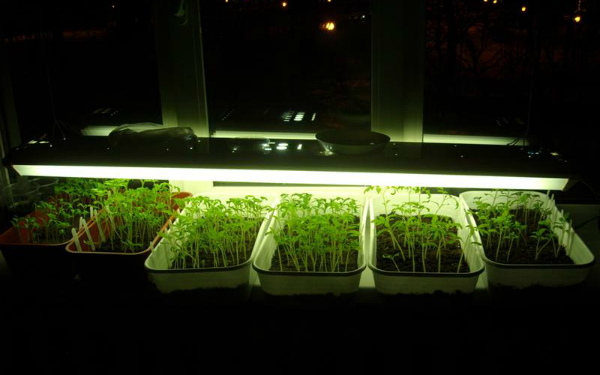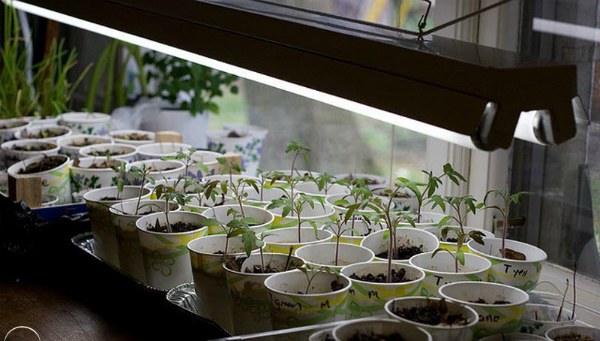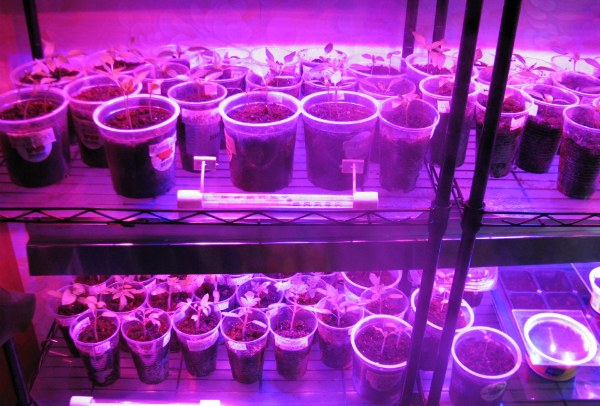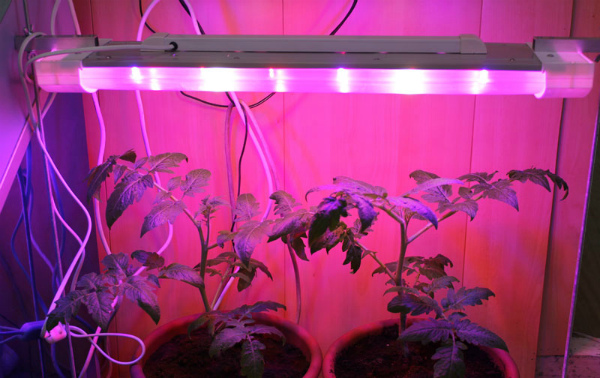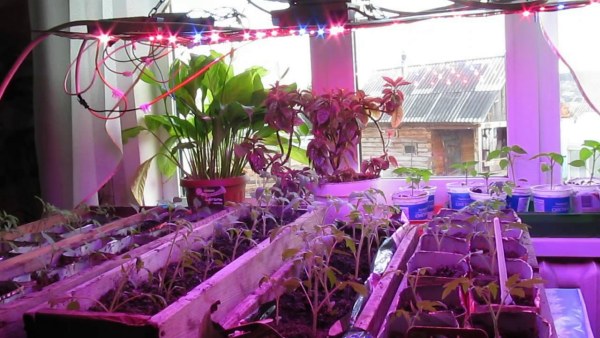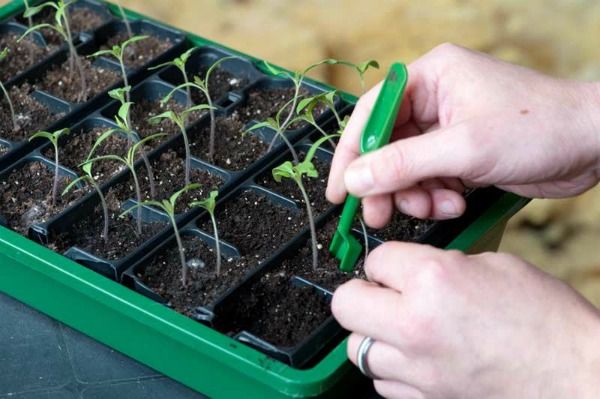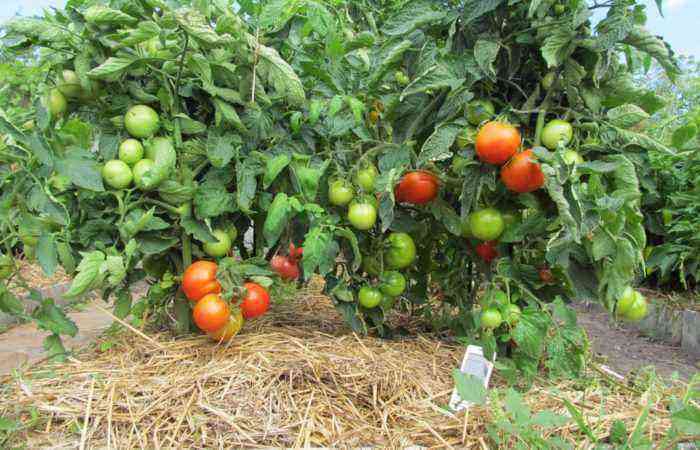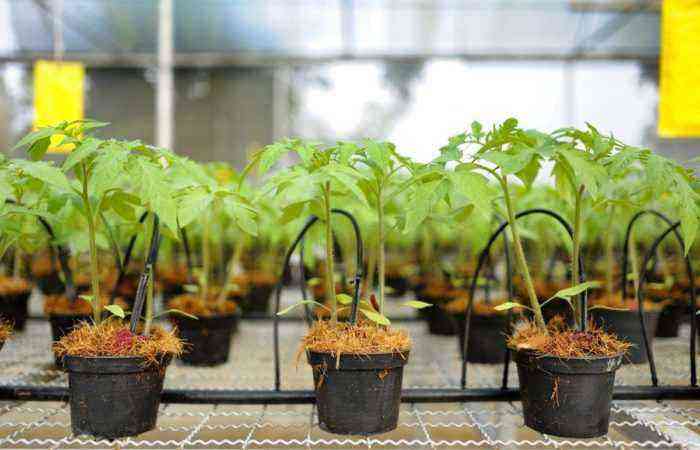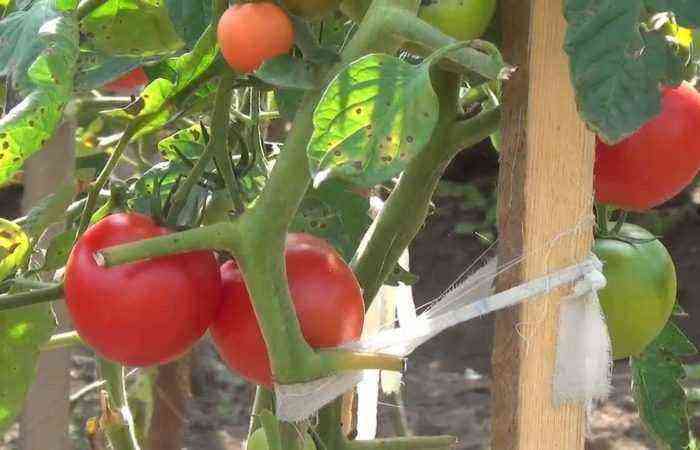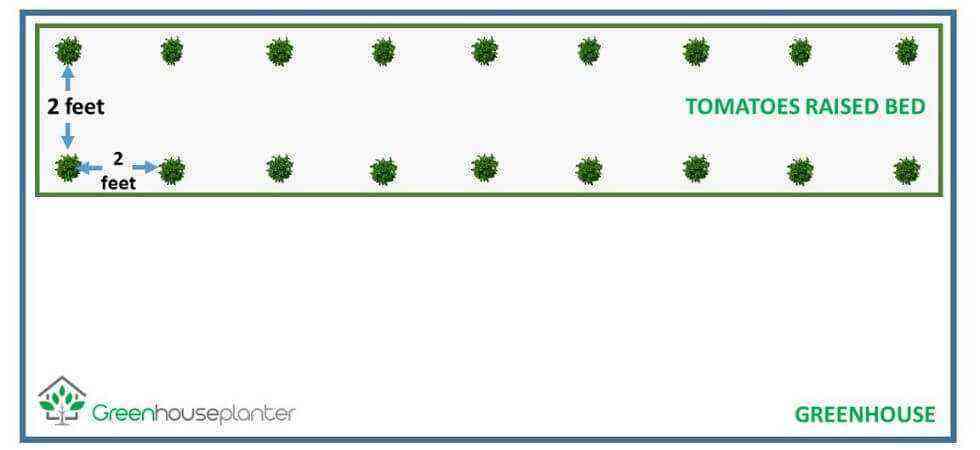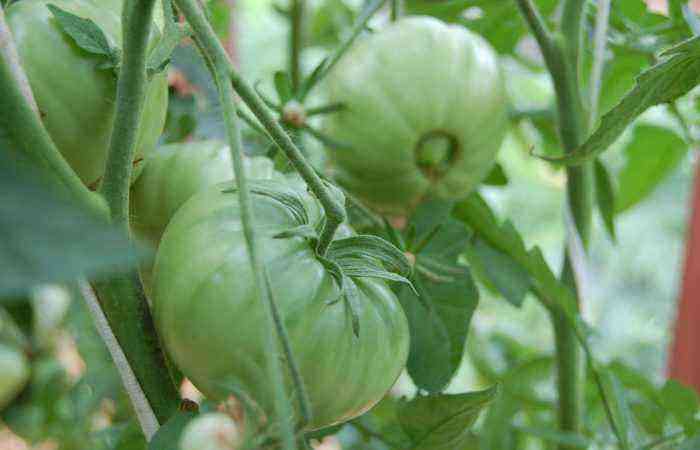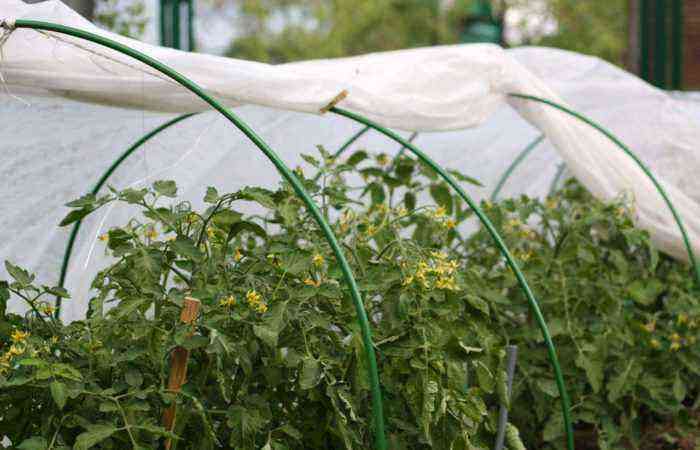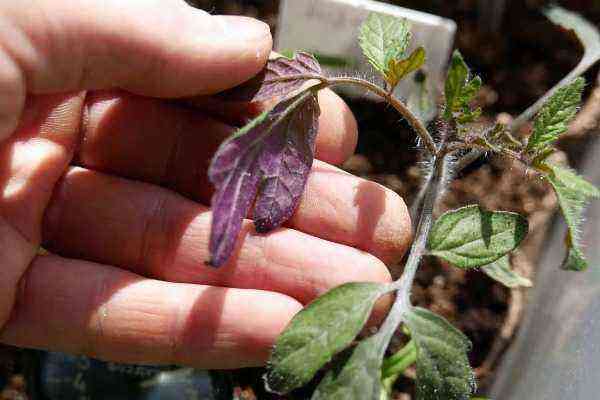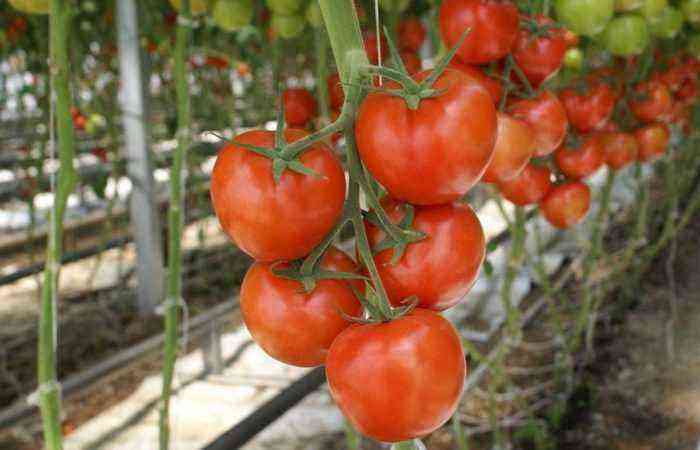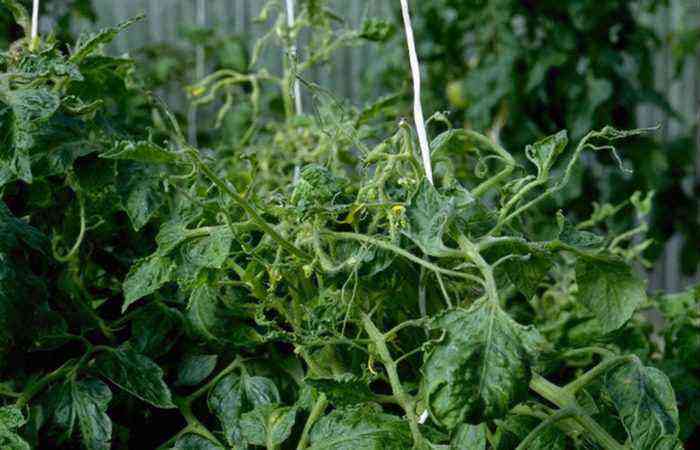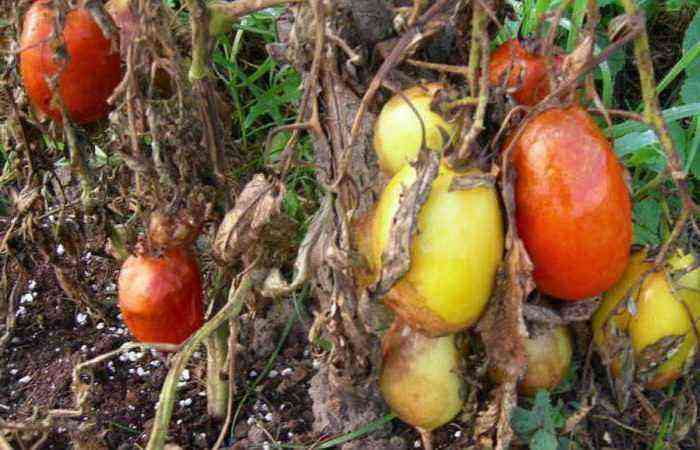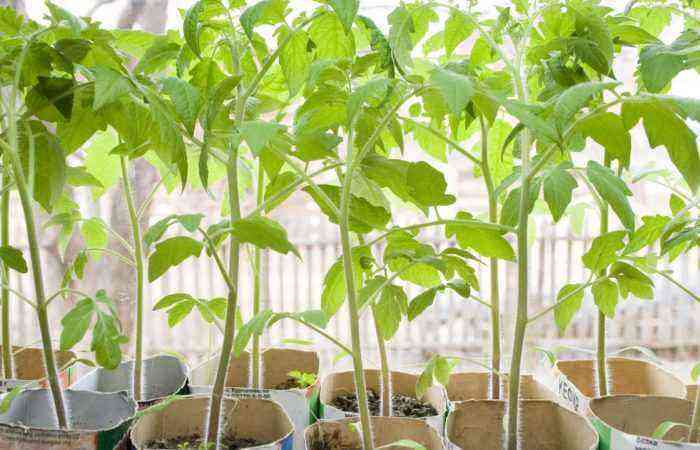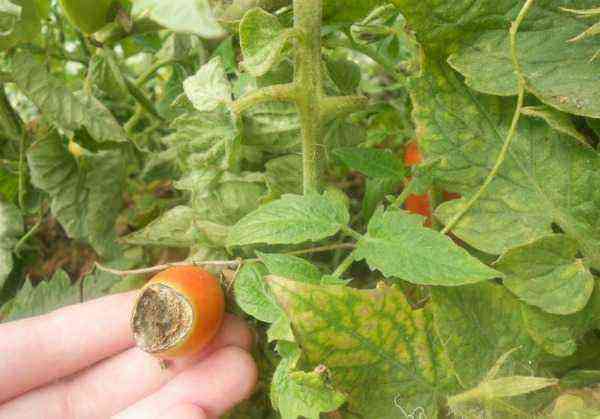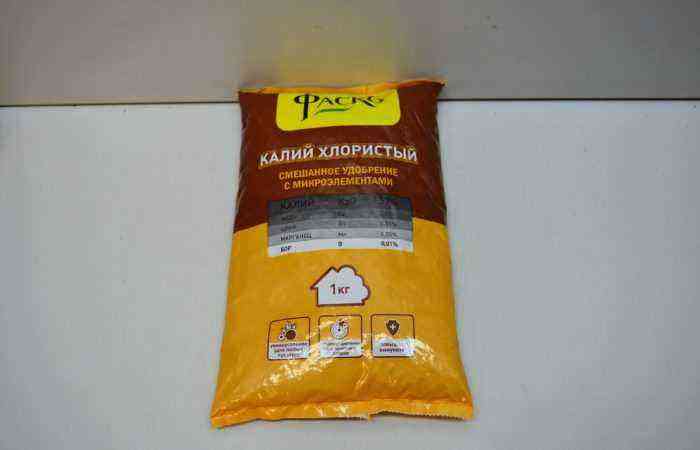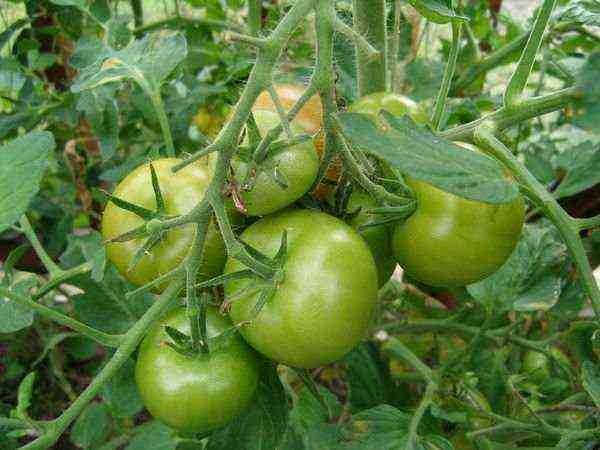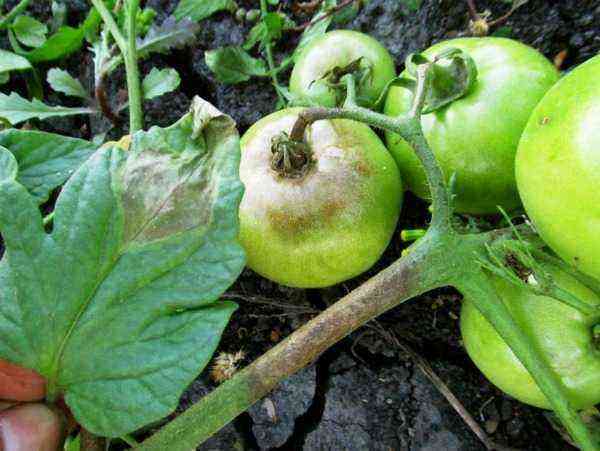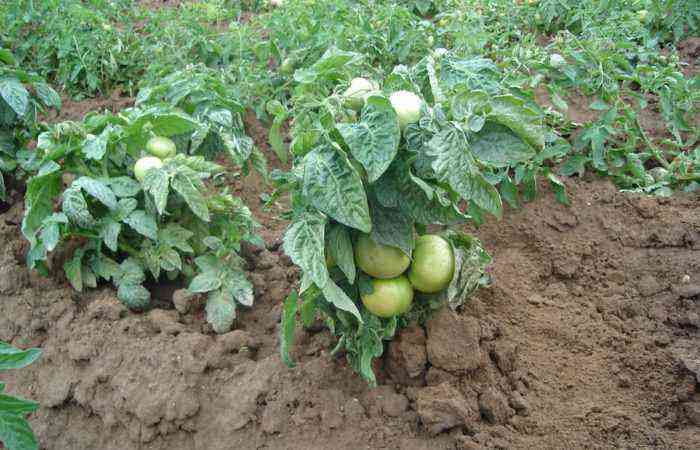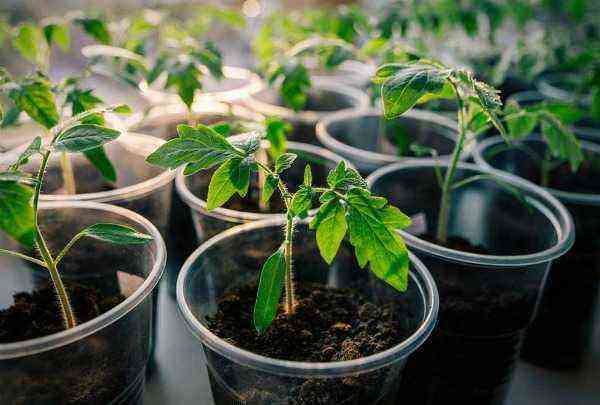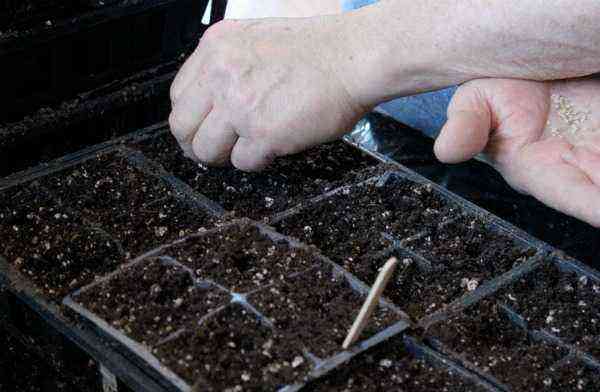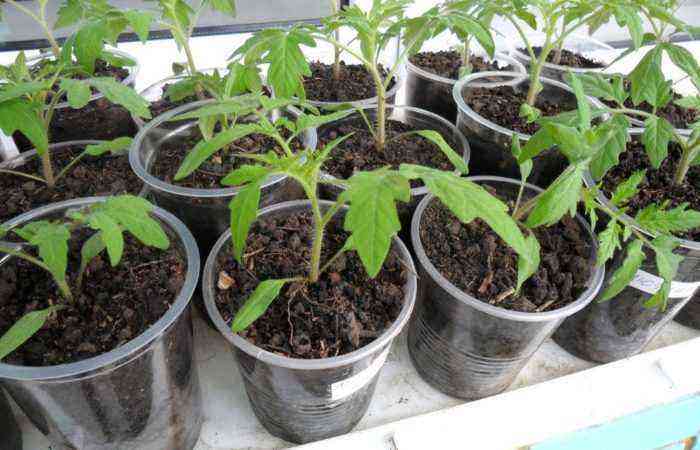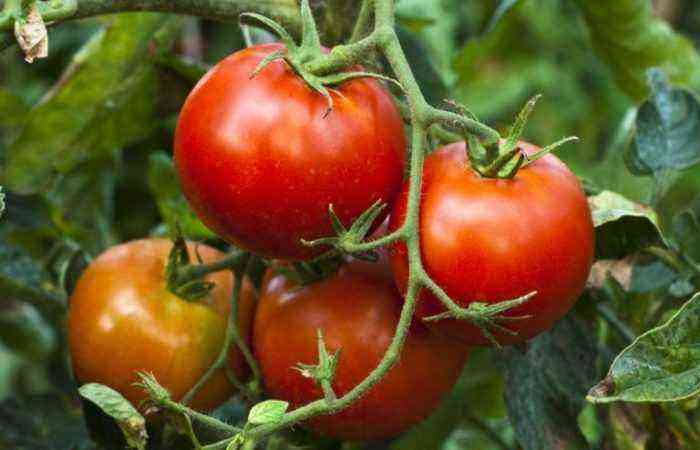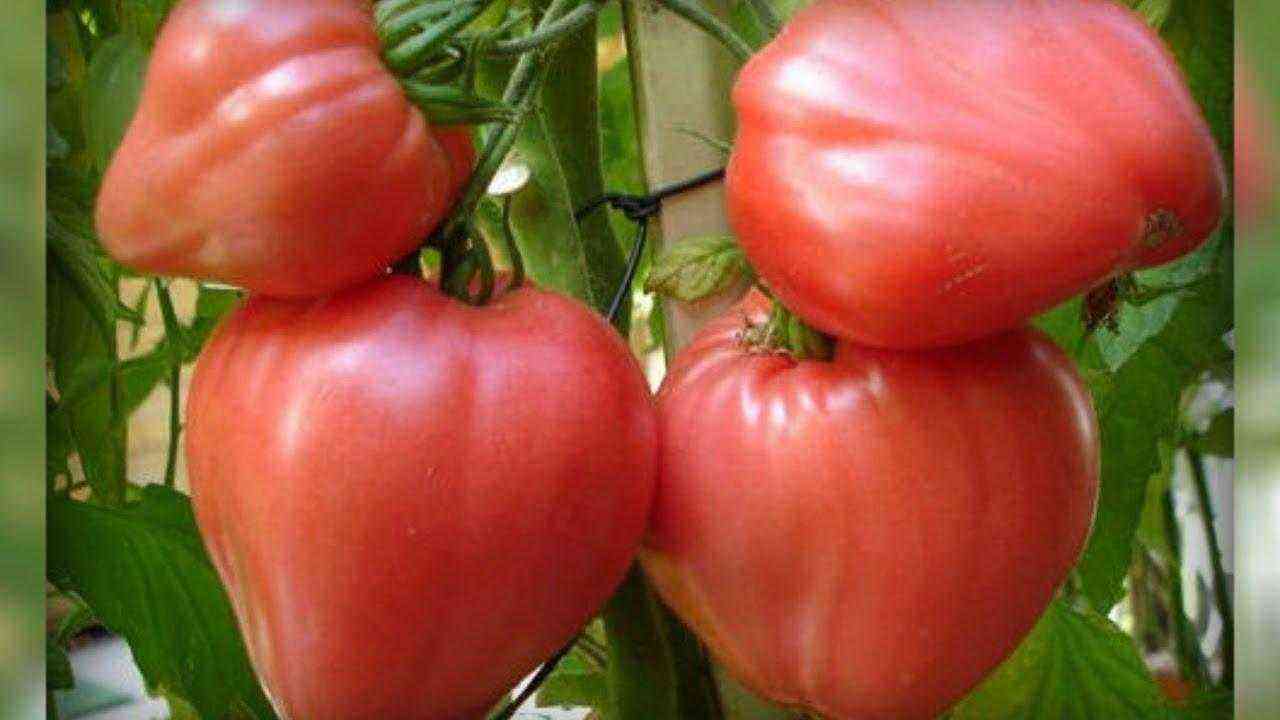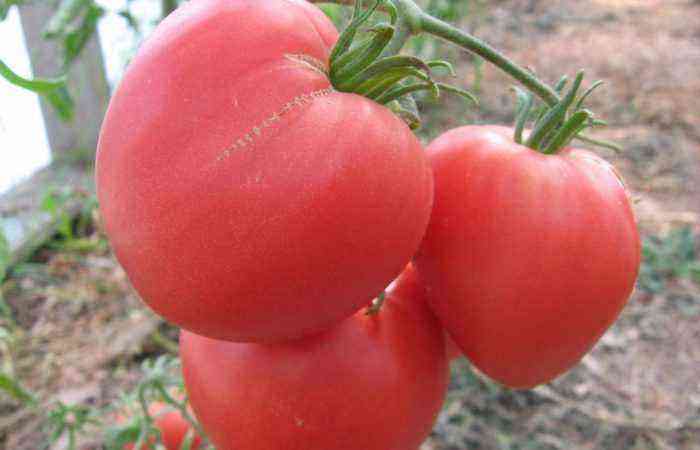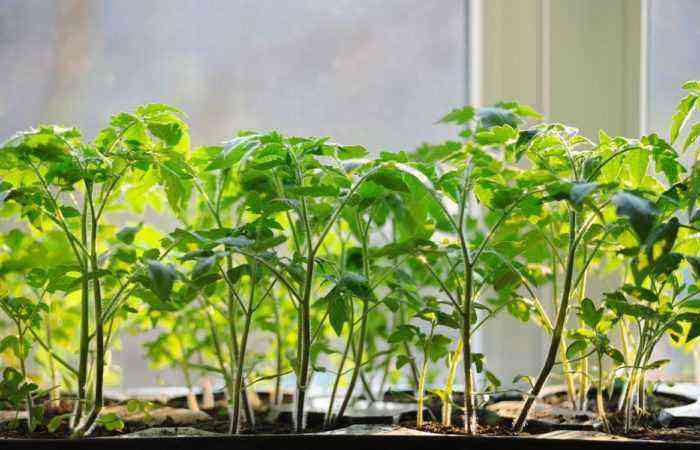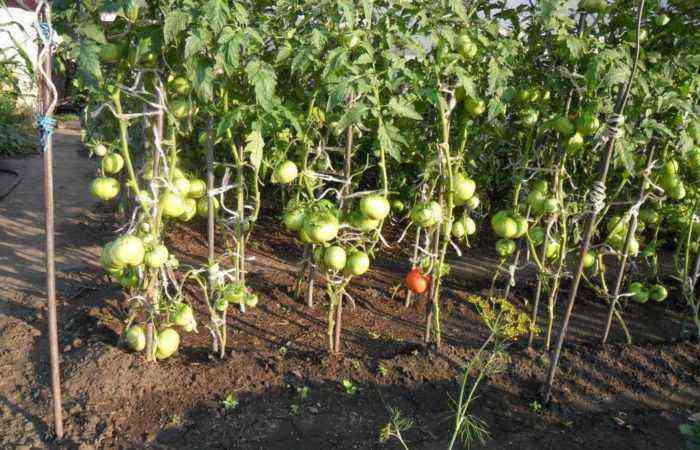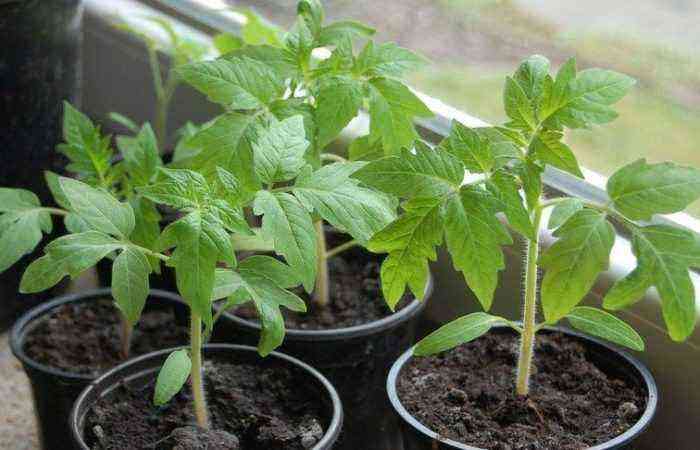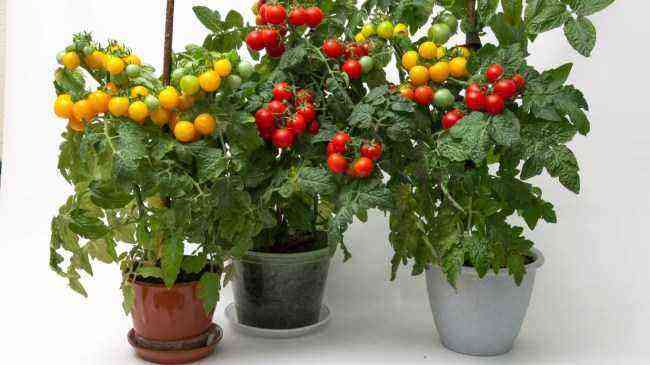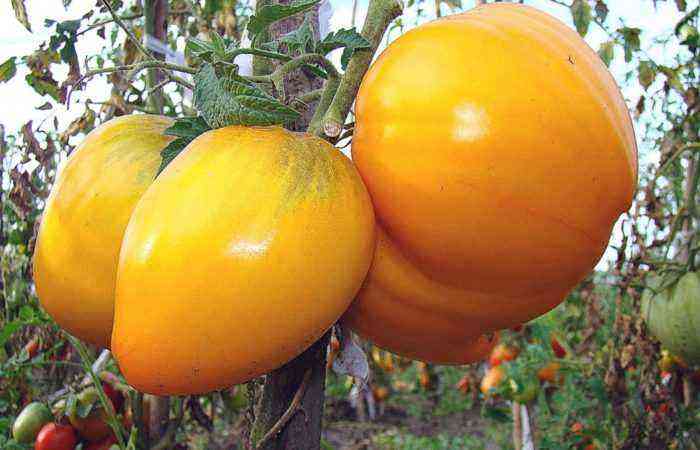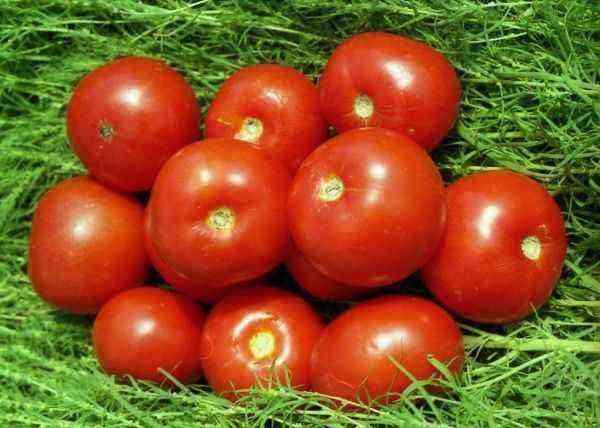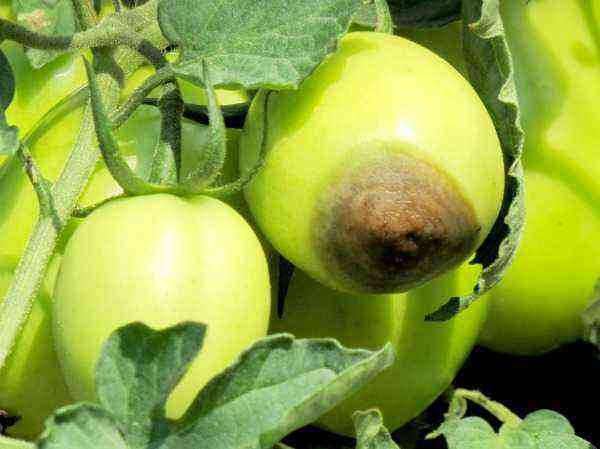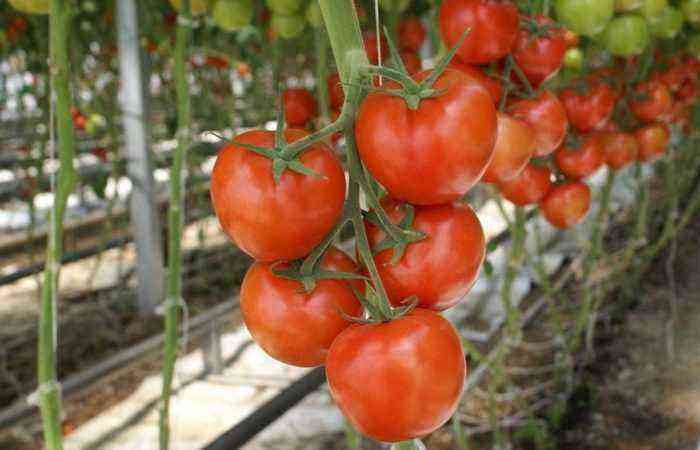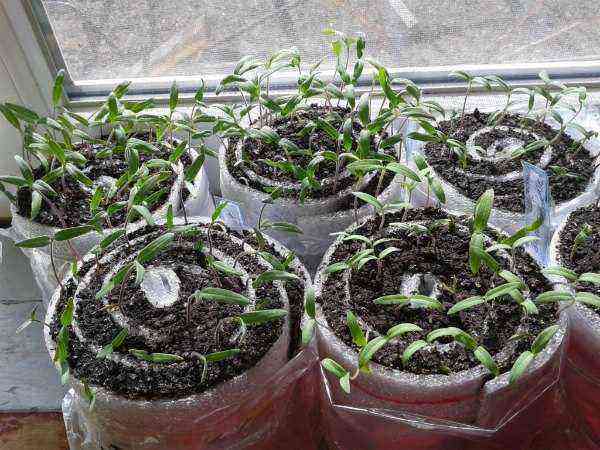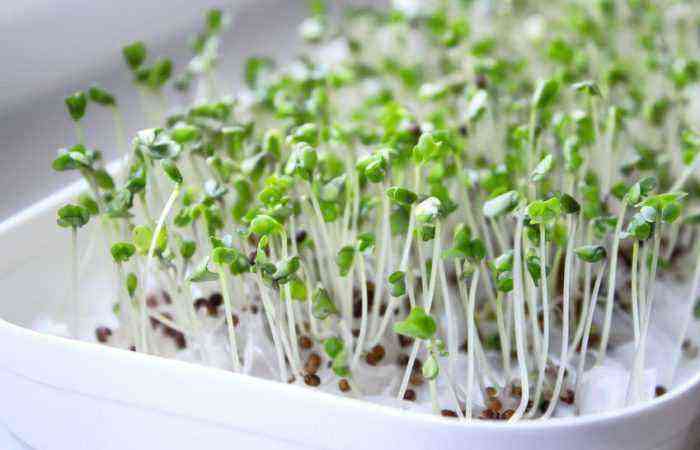Many gardeners do not know exactly how to properly illuminate tomato seedlings and whether it should be done at all. To obtain a powerful and well-developed seedling, it must be provided with a sufficient amount of light. And how to do this will be described in more detail below.
Do I need to illuminate tomato seedlings
In most varieties of tomatoes, from the appearance of seedlings to the beginning of fruiting, an average of 120 to 130 days passes. And this means that at least four months must pass before the tomatoes begin to bear fruit.
If tomato seeds are sown in the spring, then the plants may not have time to give up their entire crop. In this regard, most gardeners plant tomatoes for seedlings in the middle of winter, when daylight hours are still very short.
And since this vegetable crop is photophilous, it may suffer due to lack of light. Seedlings in the absence of illumination will grow weak, pale and very elongated. As a rule, such plants do not have time to get stronger before planting in open ground, which negatively affects their productivity.
If the seedlings are provided with proper illumination, then they will be able to avoid stretching, the bushes will grow strong and well developed.
Experts have proven that, thanks to additional lighting, tomatoes begin to bear fruit earlier than usual, and this also has a positive effect on the yield of bushes.
How to properly illuminate tomatoes at home
As mentioned above, it is necessary to illuminate the tomatoes, but how to do it correctly? A novice gardener may have a lot of questions: how to light up, for how long, when to start lighting up, etc.
If you illuminate the seedlings with an inappropriate or incorrectly installed lamp, then you will only harm it.
It is also important to take into account the optimal duration of daylight hours and a few other important nuances.
Fundamental rules
During the illumination of tomatoes, it is necessary to take into account several important rules:
- In order for seedlings to grow and develop normally, it is necessary to observe the “day-night” mode. It is not recommended to illuminate it around the clock.
- Install the lamp used for supplementary lighting at the correct distance from the plants. However, it may vary depending on the type of lamp. If the light source is placed too close to the tomatoes, then the substrate in the container will begin to dry out much faster, and this can also lead to overheating of the seedlings.
If the lamp is located higher than necessary, then this will negatively affect the effect expected from additional lighting.
- In order for the sprouts to be evenly illuminated, reflective screens are used, which can be foil, white paper sheets, a mirror, metal surfaces, light-colored plastic, etc. Such screens help to distribute the daylight luminous flux more evenly. An ordinary white curtain can also cope with this role.
- Seedlings that are located in dense groups are recommended to be illuminated with compact fluorescent lamps. Seedlings standing on a windowsill or a rack are illuminated with compact but powerful lamps.
- Distance to leaves
So that the lamps used for supplementary lighting do not harm the seedlings, but only benefit them, they should be installed at the correct distance.
For illumination 1 m2 Tomato seedlings use lamps, the power of which can vary from 200 to 450 watts. It is better not to place such a light source very close to young plants, because this leads to their overheating. It should be installed at a height of about 150 centimeters from the tomatoes.
If the lamp emits cold light, then it can be installed at a height of about half a meter.
In order to determine the optimal distance between the seedlings and the lamp, you need to put your palm under the incident light.
If you feel warm well, then the lamp is set higher. After the lighting fixtures are installed, turn on another lamp. If in this case it becomes lighter, then this means that you need to install an additional light device.
When to lighten up
In order for the illumination of tomato seedlings to give the best possible result, you need to know how long daylight hours plants need at each stage of development:
- Immediately after the appearance of seedlings for two to three days, they need to be illuminated around the clock.
- Seedlings before picking for 10–12 days are illuminated for 16 hours every day.
- When the plants are peaked, then until the age of thirty days, the daylight hours should be equal to 16 hours.
- The length of daylight hours for tomatoes from 30 to 60 days should be at least 14 hours.
The main rule is that daylight hours should not be interrupted. If you want to increase it, then for this you can turn on the backlight early in the morning. And you can distribute the necessary time for supplementary lighting between evening and morning.
Do I need to turn on the lamp at night
Illuminating tomato seedlings around the clock is highly discouraged. Plants need rest at night, its duration should be at least 5 hours. Thanks to this, the development of the tomato will be complete.
During the night, they must have time to process everything that the foliage has accumulated during daylight hours. If young tomatoes do not receive proper rest, then they develop a nutritional deficiency. As a result, the color of the foliage of such bushes changes to brown, and their deformation occurs.
Which lamps to choose for additional illumination of tomato seedlings at home
In order for tomato seedlings to grow well, it is necessary to illuminate it with lamps of a specific color spectrum. Those lighting fixtures that give off blue or red rays are best suited. Under orange-red light, seedlings will appear much faster, and this will also lead to increased growth.
Thanks to the blue-violet light, the plant cells begin to grow more intensively, and also thanks to it low and powerful shoots are formed.
When choosing a lighting device, you need to remember that:
- it should give the necessary amount of light, but at the same time should not contribute to overheating and overdrying of the air.
- The light needs soft and non-irritating tomatoes.
- the device should illuminate the plant evenly, and at the same time the rays should reach the farthest corners of the plantings.
Pros and cons of phytolamps
This type of LED lamp, like a phytolamp, is very popular among summer residents.
And they are good because:
- save electricity consumption;
- have a slight heat transfer, which is not able to affect the air temperature;
- they are environmentally friendly and safe (they do not emit ultraviolet radiation, which is considered very harmful);
- have a good blue to red ratio.
Phytolamp is perfect for additional illumination of tomato seedlings.
However, it has one drawback – it is very expensive. But due to the fact that this device saves energy, is able to serve for several years and provides rich harvests of tomatoes, its cost quickly pays off.
How to illuminate if there is no phytolamp
In addition to phytolamps, gardeners use the following lighting devices for illumination:
- High pressure sodium lamps. It gives a warm, stable light that has a positive effect on the growth and development of young tomatoes. However, such a device will require additional equipment, and it is also quite expensive.
- Sodium metal halide elements. This device is distinguished by its availability, but it has an insufficient amount of blue light, which is why the seedlings do not develop very well.
- Fluorescent lamps. Such fluorescent lamps have a lot of advantages, but their light is still quite cold, and therefore it has a poor red spectrum.
Do-it-yourself illumination of seedlings with LEDs
LED lamps are becoming more and more popular with gardeners every year. And all thanks to the fact that you can easily create a lighting device from LEDs, ideal for growing tomato seedlings. To do this, connect the 2 most important spectrum: blue and red.
In order to create a tape LED lamp with your own hands, you need to prepare:
- blue and red LEDs;
- thermal paste (hot glue);
- base, for example: furniture profile, piece of aluminum, etc .;
- power supply or driver;
- plug and cord.
When creating the perfect lighting fixture, you need to consider:
- On the tape, the LEDs must be mounted in the following sequence: one blue and two red elements.
- They are connected to each other by soldering, after which they are led to the driver, and it is connected to the switch and plug.
- You can attach the tape to the prepared surface with double-sided tape, bolts or rivets.
- Then the lamp is assembled into a single circuit with a driver, cord, switch and plug.
Super easy! Free lighting for seedlings – video
What is better to choose according to the reviews of gardeners
The most popular among summer residents are fluorescent lamps, which are quite economical and provide a good result. Every year more and more popular are LED lamps, which are economical and perfectly cope with their task.
Basic seedling care in January, February, March
As a rule, inexperienced gardeners try to sow tomatoes for seedlings as early as possible, believing that this will allow them to get the first fruits much faster. The features of sowing and caring for tomato seedlings in January, February and March will be described below.
Growing in January
January is considered the most unfavorable month for sowing tomato seeds for seedlings, because at this time there is still very little sunlight, and there is still a lot of time before planting the plants in the soil. Experienced gardeners recommend that you sow tomatoes for seedlings in January only if you can illuminate them with high-power fluorescent lamps.
But in this case, it should be taken into account that even varieties of late ripening after a couple of months will bend under their own weight.
Growing seedlings in January is complicated by the fact that they need to provide regular supplementary lighting, while the daylight hours should be at least 12 hours. However, by planting such seedlings in a heated greenhouse, you can get the first fruits quite early.
Growing in February
Most gardeners are sure that it is necessary to sow tomato seeds for seedlings in February. However, experts say that it is too early to sow seeds at this time. Although there is already more light at this time than in January, the difference is not very noticeable.
As a rule, February seedlings planted in open soil will lag behind in growth and development from those seedlings that were planted later.
Growing in March
March is considered the best month for sowing seeds of such a crop for seedlings. At this time, the sun is already shining more brightly, while the seedlings that have appeared before they are planted in open ground have time to grow and get stronger.
Gardeners have noticed that March seedlings grow and develop much better and faster than winter ones.
Features of seedling care
Make sure that the substrate in which the seedlings grow does not dry out, and also do not allow water to stagnate in the root system of the plants. The fact is that this can lead to their death: they will either rot or dry out.
After the formation of real leaf plates, the seedlings must dive into individual, not very large cups. Sickly pale shoots need to be fed. To do this, you can use either purchased or self-made fertilizer (infusion of bird droppings).
So that the grown seedlings do not stretch out, they are provided with good lighting and a certain temperature regime (the room should be pretty cool).
Common mistakes gardeners make
Most often, when supplementing tomato seedlings, gardeners make the following mistakes:
- If burns form on the foliage of seedlings, this means that the lighting fixtures are located too close to the seedlings.
- The foliage becomes faded, and the shoots elongated if the lamp is installed much higher than necessary or it does not have enough power.
- If the lighting devices are installed on the side, then the shoots of the plants may bend towards the lamps. In this case, they must be moved up.
- The use of simple incandescent lamps for supplementary lighting does not give the desired effect, because their light is completely useless for plants.
Illumination of tomato seedlings – video
If you choose the most suitable lighting device for additional illumination of tomato seedlings and install it correctly, then you can provide the seedlings with the necessary amount of light, and they will grow strong, well developed and will give a good harvest in the future.
